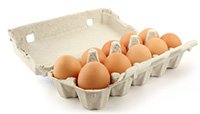Sometimes we oversimplify nutrition. We assume that the foods we eat are directly broken down into their nutritional components—protein, carbohydrates, and fats—and then digested and shuttled throughout the body based on predictable hormonal responses. We often forget about the five pounds of living bacteria we carry around in our intestines which work for or against us in nutrient processing and metabolism.
Gut bacteria are incredibly important to digestive health and metabolism, but unfortunately some gut bacteria fall in the "bad" category. Some gut bacteria may be involved in heart complications and metabolic disorders, poor mental health, and even smoking cessation weight gain.
Reducing your bad gut bacteria doesn't need to be as difficult as protecting the mountain fortress of Hornburg in the battle of Helm's Deep in "The Lord Of The Rings," but it's just as important.
The Probiotic Defense
To support good gut health, it's become popular to supplement with probiotics, which are microorganisms in your gut which aid digestion and offer other health benefits. Despite not really knowing the best strand or optimal dose of probiotics, it's become commonplace to take billions of active probiotic cultures in an effort to optimize gut bacteria.
The tactical approach used with probiotics is simple: Add new "good" bacteria in an effort to crowd out the bad ones. One point many people consistently fail to consider is correcting the underlying environment in the gut that creates said "bad" bacteria. If you don't address the environment, then you'll need to keep trucking in new healthy bacteria day-in and day-out. And even then, too much of a good thing can give you a nasty case of diarrhea.
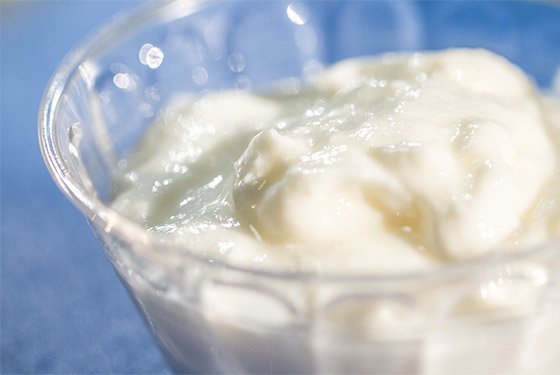
How Prebiotics Can Help
Another tactical approach that's gaining popularity is to rehabilitate your environment and the "foods" you feed the bacteria in your gut. One way to do this is with prebiotics. Prebiotics were initially defined as "a non-digestible food ingredient that beneficially affects the host by selectively stimulating the growth and/or activity of one or a limited number of bacteria in the colon, and thus supports host health."
At the basic level, most prebiotics are special kinds of fiber. One of the most popular prebiotic fibers, which we'll look at in more detail here, is the long-chain prebiotic inulin, not to be confused with insulin. Fructooligosaccharides make up another class of prebiotic fibers that is gaining in popularity. Fructooligosaccharides differ from inulin in chain length; fructooligosaccharides are shorter-chain, faster-digesting prebiotics.
In order to be considered a prebiotic, the fiber needs to be resistant to human digestion; you want to use prebiotics to feed the bacteria in your gut rather than fuel your own energy needs. They also need to be readily fermentable by the bacteria in your gut. Once they pass through your small intestine undigested, they need to be able to be used by the bacteria in your large intestine.
Finally, a prebiotic should selectively stimulate the growth of good bacteria in your gut which contribute to your health, not to bad bacteria that, for instance, turn carnitine in meat or choline in eggs into potentially toxic substrates.
The Role of Inulin
Inulin is a prebiotic, present in foods like artichokes, onion, chicory, and jicama. It has been shown to meet the three criteria needed to be classified as a prebiotic: It's resistant to mammalian digestion, fermentable, and it selectively grows beneficial bacteria.
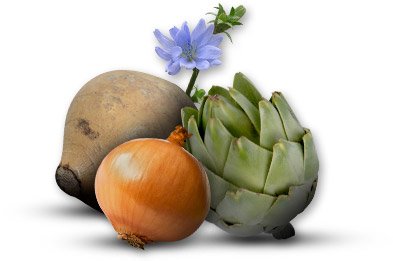
Aside from just bolstering the levels of healthy bacteria in your gut, inulin has also been suggested to:
- Support stomach and digestive health.
- Support a healthy inflammation response.
- Increase the bioavailability and absorption of calcium, magnesium, and iron in the diet.
- Decrease levels of the hunger hormone ghrelin following a high-carbohydrate meal.
As promising as inulin is, it's important not to overdo the dose. I'm from the school of, "if a little is good, then a lot is better," but with things like probiotics, this mentality will leave you with diarrhea, bloating, and/or potentially small intestine bacterial overgrowth.
Dosing
What is a good dose of inulin, then? It seems to vary from individual to individual. One study published in the "British Journal of Nutrition" estimated that prehistoric foragers in the Chihuahuan Desert ate a diet which contained upward of 135 grams of inulin-like fructans (the greater class of carbohydrates which inulin is part of) per day. I use this to point out the safety of inulin and that the human gut is adaptable.
Dosing of inulin varies for therapeutic reasons, ranging from 10 g per day for lowering triglycerides to upward of 40 g per day for relieving constipation. You should not have any issues with 5-10 g of inulin per day.
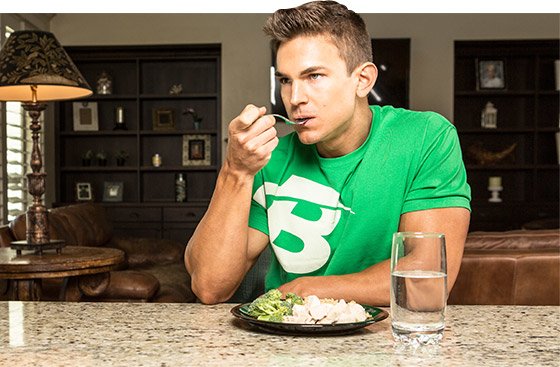
One other important point to note is that we often associate fiber in general with satiety and increased feelings of fullness. Inulin and other prebiotics do not seem to impact these factors; which is fine; different foods have different roles in your diet. Inulin's role is to selectively grow the good bacteria in your gut for better immune health and nutrient processing.
The concept of prebiotics is young in the world of nutrition and science—less than 20 years old—and the exact optimal dose of prebiotic fibers has yet to be completely fleshed out, but we do know that inulin preferentially feeds the beneficial bacteria in your gut. Over the long term, these bacteria fortify your immune system, support a healthy inflammation response, and work to ensure maximum nutrient absorption.
References
- Lecerf J-M, D?peint F, Clerc E, et al. Xylo-oligosaccharide (XOS) in combination with inulin modulates both the intestinal environment and immune status in healthy subjects, while XOS alone only shows prebiotic properties. British Journal of Nutrition 2012;108(10):1847-58. doi: doi:10.1017/S0007114511007252.
- Austarheim I, Nergard CS, Sanogo R, Diallo D, Paulsen BS. Inulin-rich fractions from Vernonia kotschyana roots have anti-ulcer activity. Journal of Ethnopharmacology 2012;144(1):82-5. doi: http://dx.doi.org/10.1016/j.jep.2012.08.031.
- MUNJAL U, SCHARLAU D, GLEI M. Gut Fermentation Products of Inulin-type Fructans Modulate the Expression of Xenobiotic-metabolising Enzymes in Human Colonic Tumour Cells. Anticancer Research 2012;32(12):5379-86.
- Tarini J, Wolever TMS. The fermentable fibre inulin increases postprandial serum short-chain fatty acids and reduces free-fatty acids and ghrelin in healthy subjects. Applied physiology, nutrition, and metabolism 2010;35(1):9-16. doi: 10.1139/h09-119.
- Hess JR, Birkett AM, Thomas W, Slavin JL. Effects of short-chain fructooligosaccharides on satiety responses in healthy men and women. Appetite 2011;56(1):128-34. doi: http://dx.doi.org/10.1016/j.appet.2010.12.005.
- Leach JD, Sobolik KD. High dietary intake of prebiotic inulin-type fructans in the prehistoric Chihuahuan Desert. British Journal of Nutrition 2010;103(11):1558-61. doi: doi:10.1017/S0007114510000966.
- Roberfroid M. Prebiotics: The Concept Revisited. The Journal of Nutrition 2007;137(3):830S-7S.
- Linetzky Waitzberg D, Alves Pereira CC, Logullo L, et al. Microbiota benefits after inulin and partially hydrolized guar gum supplementation: a randomized clinical trial in constipated women. Nutrici?n Hospitalaria 2012;27:123-9.
- Petry N, Egli I, Chassard C, Lacroix C, Hurrell R. Inulin modifies the bifidobacteria population, fecal lactate concentration, and fecal pH but does not influence iron absorption in women with low iron status. The American journal of clinical nutrition 2012;96(2):325-31. doi: 10.3945/ajcn.112.035717.
- Dewulf EM, Cani PD, Claus SP, et al. Insight into the prebiotic concept: lessons from an exploratory, double blind intervention study with inulin-type fructans in obese women. Gut 2013;62(8):1112-21. doi: 10.1136/gutjnl-2012-303304.
- Russo F, Linsalata M, Clemente C, et al. Inulin-enriched pasta improves intestinal permeability and modifies the circulating levels of zonulin and glucagon-like peptide 2 in healthy young volunteers. Nutrition research (New York, NY) 2012;32(12):940-6.
- Legette LL, Lee W, Martin BR, Story JA, Campbell JK, Weaver CM. Prebiotics Enhance Magnesium Absorption and Inulin-based Fibers Exert Chronic Effects on Calcium Utilization in a Postmenopausal Rodent Model. Journal of Food Science 2012;77(4):88-94. doi: 10.1111/j.1750-3841.2011.02612.x.
Recommended For You
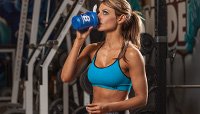
Citrulline Malate: The Fatigue Fighter!
No modern pre-workout or pump-boosting supplement is complete without citrulline. Here's why this amino acid is earning its way to the ergogenic hall of fame!
Can You Build Muscle On A Ketogenic Diet?
You know protein is essential for muscle growth, but carbs play an important role too. Here's what you need to know.